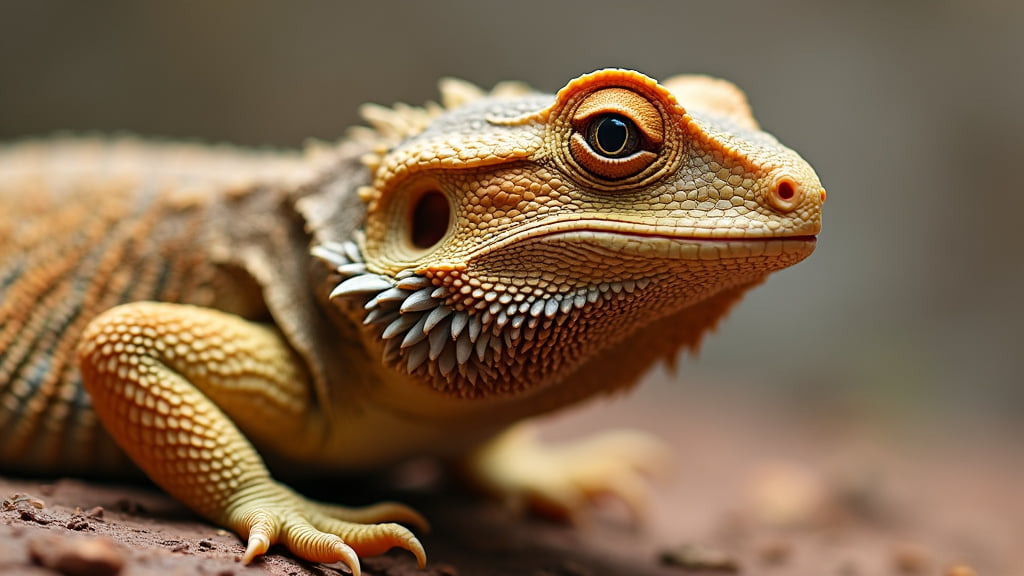Owning a bearded dragon can be an incredibly enriching experience, marked by fascinating behaviours and unique needs. One of the most crucial aspects of bearded dragon care is understanding their shedding frequency. This topic is often overlooked by new reptile owners but is vital for maintaining the health and happiness of your scaly friend.
Let’s delve into the intricacies of shedding in bearded dragons, from how often it occurs to the various factors influencing it. We’ll explore practical advice on what you can do to facilitate this natural process, drawing from my own experiences and expert insights.
The Basics of Shedding in Bearded Dragons
Why Do Bearded Dragons Shed?
Like other reptiles, bearded dragons shed their skin as they grow. This is a natural process known as ecdysis, which allows them to replace old, worn-out skin with a new layer. Younger dragons tend to shed more frequently because they are in a rapid growth phase, while older dragons shed less often.
The Shedding Process
Shedding can be a somewhat uncomfortable time for your beardie. You might notice them becoming slightly more irritable and losing their appetite temporarily. Generally, the shedding process starts from the head and moves down the body. It’s essential not to peel or force the skin off, as this can cause injury.
How Often Do Bearded Dragons Shed?
Shedding frequency in bearded dragons varies depending on their age and health. Here’s a general breakdown:
- Juveniles (0-6 months): Expect shedding every few weeks
- Sub-adults (6-12 months): Roughly once a month
- Adults (12+ months): Every few months
Factors Influencing Shedding Frequency
Age and Growth Rate
As previously noted, younger bearded dragons will shed more frequently due to their rapid growth rates. During the juvenile phase, you might notice that your pet sheds almost continuously. This frequency decreases as they mature, reaching a steady pattern in adulthood.
Diet and Nutrition
A balanced diet rich in calcium and vitamins is crucial for healthy shedding. Insufficient nutrients can lead to incomplete or problematic sheds. I’ve always made it a point to ensure my beardies receive a well-rounded diet, including insects, leafy greens, and occasional fruits. Supplements can also be beneficial, but always consult a vet before making dietary changes.
Environmental Conditions
Humidity and temperature play significant roles in the shedding process. Beardies thrive in warm, arid conditions, but inadequate humidity can result in stuck sheds. Maintaining a humidity level of around 30-40% in their habitat usually works best. Investing in a good hygrometer and thermometer can ensure you’re providing the optimal environment.
Facilitating Healthy Shedding
Providing Proper Hydration
Hydration is essential for easing the shedding process. Offer your bearded dragon regular baths in lukewarm water. This not only helps with hydration but can also soften the shedding skin. During my many years of caring for beardies, I’ve found that a bath every few weeks, or as needed, makes a significant difference.
Utilising Shedding Aids
There are various shedding aids available, like reptile-safe sprays and oils, designed to facilitate easier shedding. These can be used sparingly and should ideally be recommended by a vet. While these aids aren’t a necessity, they can be beneficial in certain situations.
Creating an Appropriate Habitat
Provide plenty of rough surfaces and décor in your dragon’s habitat. Rocks, branches, and logs allow them to naturally rub off shedding skin. A well-structured environment can alleviate many shedding issues.
Spotting Shedding Issues
Signs of Problematic Shedding
- Retained Shed: Patches of old skin remaining after the shedding process.
- Swelling or Redness: Could indicate infections or underlying health problems.
- Behavioural Changes: Lethargy, excessive scratching, or rubbing against objects.
If you notice any of these signs, it’s imperative to consult with a veterinarian specialising in reptiles. Early intervention can prevent minor issues from escalating into significant health problems.
Conclusion
Understanding and facilitating your bearded dragon’s shedding process is part and parcel of responsible reptile ownership. By keeping an eye on their diet, environment, and hydration levels, you can significantly ease this natural process. With the right care, your bearded dragon can shed smoothly and grow to be a healthy, happy reptile. Remember, when in doubt, it’s always best to consult a vet to ensure your pet’s well-being.
For more detailed information, visit our internal link.
Click here to view our recommended shedding aids.
Meta Description: Discover the key factors influencing bearded dragon shedding frequency. Learn practical tips and expert advice for facilitating healthy shedding in your pet. Read now!
By following these guidelines, you’ll be well-equipped to handle your bearded dragon’s shedding needs, ensuring they remain in tip-top shape throughout their life stages. Happy herping!

